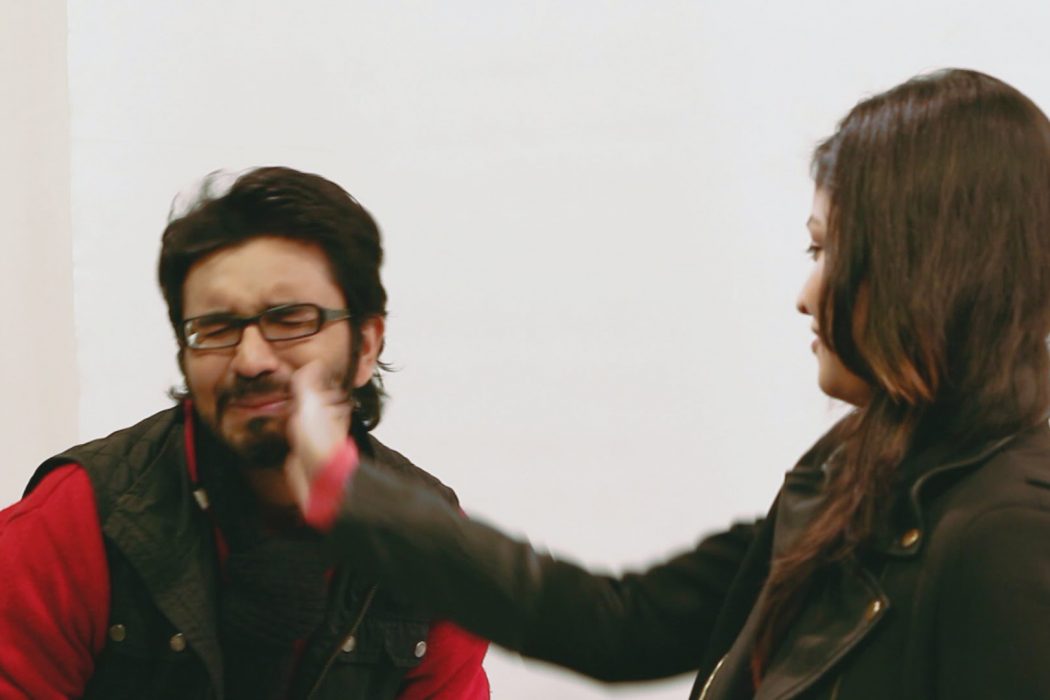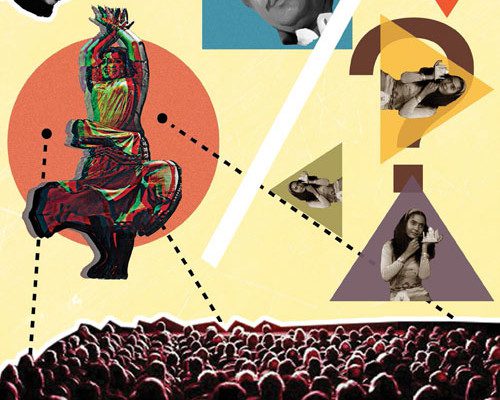Slapping is ubiquitous in India. It's not just in the newspapers and on the streets; it's in countless soap operas, in Bollywood films, in reality TV shows.
Some time back, as the month of July came to a close, two politicians from Tamil Nadu got into a fight at the Delhi airport. They were waiting to board their flight back to their home state, and their war of words eventually turned into something more intense. Several versions of the fight have circulated in the media, but there’s no doubt about the most dramatic part: Sasikala Pushpa, an MP from the AIADMK, slapped Tiruchi Siva, an MP from the rival DMK. As the fight escalated, airport security separated the two; Pushpa then got onto the airplane, but Siva refused to board the flight.
Just two days later, Pushpa appeared in the Rajya Sabha and claimed that she was now the victim of slapping. While she and Siva had reconciled, her own party members were now threatening her. Leaving it deliberately vague, she said that “her leader” had slapped her, which many read as a veiled reference to Jayalalithaa. Within minutes, she was sacked, for bringing “ill name to the party”, according to AIADMK’s Twitter handle.
The very next day, I was taking a bus in central Delhi, not far from Sansad Bhawan. No MP, of course, would ever travel by bus; we were a more modest bunch. The bus was extremely crowded, largely with lower-level bureaucrats, when suddenly two men began shouting at each other and pushing each other. Their jostling and shoving caused great inconvenience among the passengers in the packed bus. At a seemingly random spot, with no bus stop in sight, the driver halted the bus for the two men to tumble out.
Looking out of the window, I realised that the spot wasn’t random. A police van was parked outside.
As the two men from the bus approached the police, the older man turned around and slapped the younger man twice, squarely on the face. He then pushed the younger man towards the police. One police officer, despite knowing nothing about the fight, grabbed the younger man and gave him another slap across the face, just for good measure.
Slapping is ubiquitous in India. It’s not just in the newspapers and on the streets; it’s in countless soap operas, in Bollywood films, in reality TV shows. An infamous slapping duel on a reality TV show turned the phrase “How can she slap?” into a global viral sensation.
This is not to say that the United States is any less violent; in fact, the slaps meted out by the Indian police force may be preferable to the trigger-happy gun violence of their American counterparts.Slapping is part of the cultural fabric in a way that cannot be located in, say, the United States, my home country. The phrase “one tight slap,” for instance, is nowhere to be found in American English.
But then the slap may not be primarily a tool of violence, at least not of the bluntly physical sort. One could argue that the effect of the slap is more symbolic than physical, and that, in India, it has become a shorthand way of asserting one’s authority. It is the way the husband asserts authority over his wife; the way that the BMW-owner puts the rickshaw puller in his place; the way a boss exerts control over his underlings; the ways thousands of hierarchies are reinforced. (This interpretation of the slap is along the lines of how slapping is talked about in the United States, when it is talked about at all. In the U.S., the slap is infused with misogyny: the slang website “Urban Dictionary” has long, sexist entries for the terms “bitch slap” and “pimp slap.”)
The slap is, in short, a tool of power, and more than that, of humiliation. Of course, it does physical harm, but that is not the main point. It does not inflict the same amount of physical pain as a well-placed punch or kick, but that is not its goal: more often than not, the point of the slap is to establish the slapper’s dominance.
That’s why certain slaps are so surprising, like the one that spawned the “How can she slap?” meme. The line comes from a fight that broke out during the filming of a reality TV show called Bindass Dadagiri, which promoted itself as India’s “meanest TV show.” In it, candidates were subjected, essentially, to ragging rituals, and those who could withstand it the best, won the contest.
In one of the ragging sequences, a “Dada” named Esha was verbally abusing a contestant named Ravi Bhatia. When Bhatia responded sarcastically to Esha instead of keeping mum like he was supposed to, Esha delivered an unscripted slap. For Bhatia, this was too much. Although – in the unreal ‘reality’ of the show – the dada-s were supposed to be the powerful bossy ones, Bhatia could not stand the humiliation of being hit by a woman. Instinctively, he slapped her back, but more angrily, more viciously. The fictional setup of the show was overturned by patriarchal reality.
But the incident did not end there. Bhatia did, of course, yell “How can she slap?!,” thus ensuring his international internet fame. But the full video extends for another minute, and it features Bhatia getting beaten up by a crowd of men from the show’s crew, while shouting the usual misogynistic Hindi obscenities at him. He was eventually taken to the hospital.
This was not justice, but retribution. It was retaliation of the ‘khap panchayat’(village council) variety: the men protecting the honor of their women, even in a place so ‘modern’ as a Bombay reality TV-show set.
The slap, then, may be symbolic, but it can call into existence severe physical violence. It is a warning shot, a testing of the grounds. If it reinforces a pre-existing relationship of dominance, it may remain at just a slap. In murkier situations, its consequences escalate – whether that leads to mob violence, or the expulsion of an MP by a mercurial party boss.















